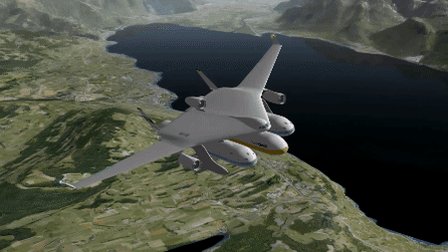
Breaking News
 China Will Close the Semiconductor Gap After EUV Lithography Breakthrough
China Will Close the Semiconductor Gap After EUV Lithography Breakthrough
 The Five Big Lies of Vaccinology
The Five Big Lies of Vaccinology
 Large global study analyzing data from 192 countries has sparked intense debate by suggesting...
Large global study analyzing data from 192 countries has sparked intense debate by suggesting...
Top Tech News
 EngineAI T800: Born to Disrupt! #EngineAI #robotics #newtechnology #newproduct
EngineAI T800: Born to Disrupt! #EngineAI #robotics #newtechnology #newproduct
 This Silicon Anode Breakthrough Could Mark A Turning Point For EV Batteries [Update]
This Silicon Anode Breakthrough Could Mark A Turning Point For EV Batteries [Update]
 Travel gadget promises to dry and iron your clothes – totally hands-free
Travel gadget promises to dry and iron your clothes – totally hands-free
 Perfect Aircrete, Kitchen Ingredients.
Perfect Aircrete, Kitchen Ingredients.
 Futuristic pixel-raising display lets you feel what's onscreen
Futuristic pixel-raising display lets you feel what's onscreen
 Cutting-Edge Facility Generates Pure Water and Hydrogen Fuel from Seawater for Mere Pennies
Cutting-Edge Facility Generates Pure Water and Hydrogen Fuel from Seawater for Mere Pennies
 This tiny dev board is packed with features for ambitious makers
This tiny dev board is packed with features for ambitious makers
 Scientists Discover Gel to Regrow Tooth Enamel
Scientists Discover Gel to Regrow Tooth Enamel
 Vitamin C and Dandelion Root Killing Cancer Cells -- as Former CDC Director Calls for COVID-19...
Vitamin C and Dandelion Root Killing Cancer Cells -- as Former CDC Director Calls for COVID-19...
 Galactic Brain: US firm plans space-based data centers, power grid to challenge China
Galactic Brain: US firm plans space-based data centers, power grid to challenge China
Modular Plane Concept Treats Passenger Cabin Like A Shipping Container

Airplanes, trains, and cargo ships may travel through different mediums, but they roughly do the same thing: encase precious cargo in a similar container, and then unload it at the destination. "Clip Air" is a concept from Switzerland's Ecole Polytechnique Fédérale De Lausanne that wants planes, trains, and ships to carry people much the same way they carry shipping crates: in detachable, modular tubes, which can be put on rails, loaded on boats, or slung under wing.
EPFL explains the benefits:
The decoupling of the load (capsules) and carrying units (wings) allows for simplified fleet management and maintenance operations for airlines and is expected to improve the ground operations for airports. Clip-Air also provides effective possibility of combining commercial freight and passengers on the same flight without any compromise in comfort. Besides, Clip-Air is designed to operate in a multi-modal context and is expected to improve the multi-modality concept by allowing a better integration between air transport and other transport modes.

 This is why RAM costs so much
This is why RAM costs so much

